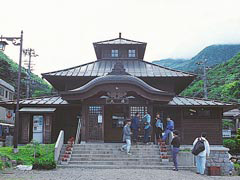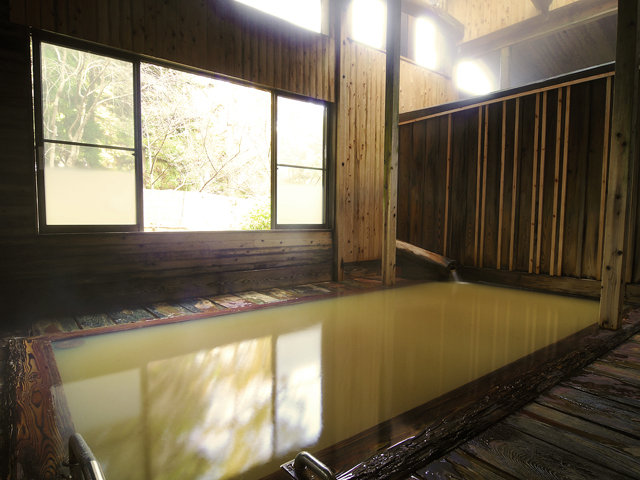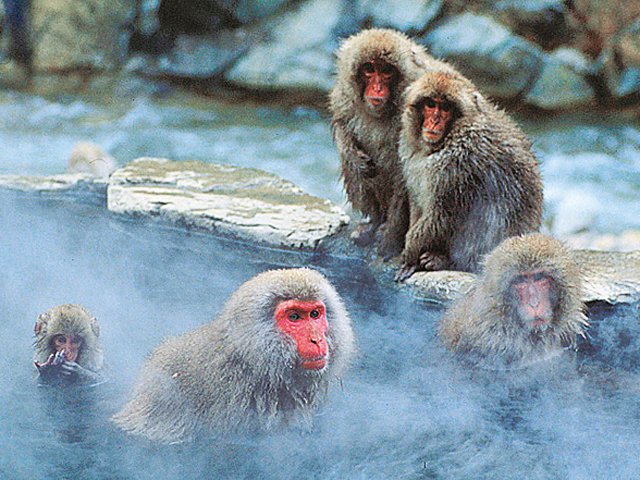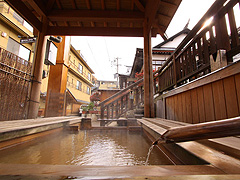Yamada Onsen Oyu

Along with being the symbol of Yamada Onsen, it is a representative public bath of Shinshu Takayama Onsenkyo. The current building was rebuilt in 1989, but it is a Momoyama-style building with an entrance house and a karakaze. The previous simplicity is left intact. In the hall, trees are used not only for the bath, but also for the walls, ceiling and window piers. A cypress is used at the edges of the pillars and the yūfune, and the wind with the incense of wood is wonderful. In the early morning, the hot water is stocked, and the hot water of the mountains is further enlivened.










